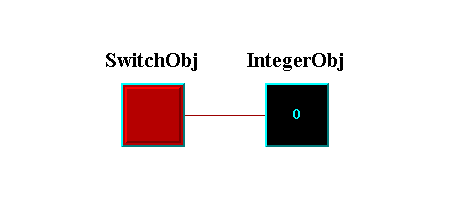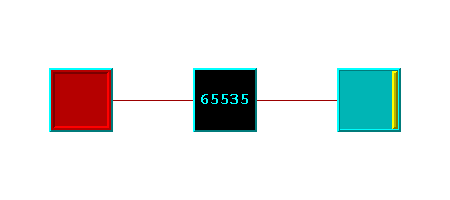NeatTools
Module Event Broadcast Model
(as I understand it)
30 Mar 1999

By connecting the SwitchObj-output to IntegerObj-input, we allow for the following dialogue to occur:
|
SwitchObj::engine(OUTPORT) SwitchObj::broadcast(OUTPORT) |
|
|
IntegerObj::engine(INPORT,LINKOBJ) IntegerObj::LINKOBJ(DATA) |
|
| SwitchObj::access(OUTPORT,LINKOBJ,DATATYPE) | |
| IntegerObj::broadcast(OUTPORT) |
In more detail,
|
|
| The SwitchObj::broadcast(OUTPORT) method ("pings") invokes the engine() method of every Module connected to the particular output port (OUTPORT) of the SwitchObj. | |
|
|
| The LINKOBJ.access(DATA) method is a request by the IntegerObj Module via the LINKOBJ for data from the SwitchObj Module. This method then invokes the SwitchObj::access(OUTPORT, &LINKOBJ, DATATYPE) method. | |
|
|
|
|
|
The IntegerObj::broadcast(OUTPORT) method ("pings")
invokes the engine() method of every Module
connected to the particular output port (OUTPORT) of the IntegerObj.
And so on... For instance, one can connect the IntegerObj-output to 1DMeterObj-input. |
|
